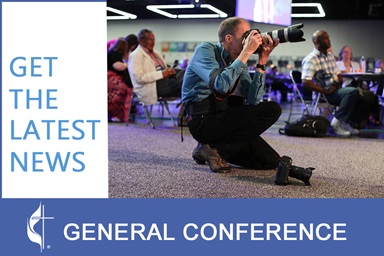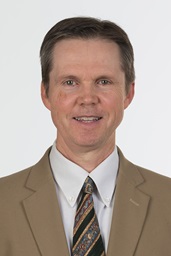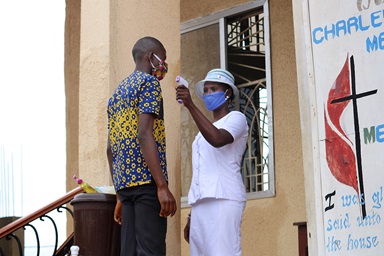Public awareness campaigns, including murals that share key health messages about the deadly Ebola virus, have contributed to a decline in confirmed cases in Liberia – welcome news for a country suffering from a broken health care system and leadership flaws.
Just six districts reported new or confirmed Ebola cases the week of Dec. 14, according to the World Health Organization.
A key part of the public messages of health, prevention and treatment of Ebola has incorporated visual arts.
Liberia continues to battle a high illiteracy rate that wavers between 70 to 80 percent. This, coupled with a traditional culture for oral storytelling and relay of messages, inspired an innovative concept of painting murals on walls around Monrovia as a means of sharing of key health messages.
Three of Liberia’s locally renowned artists, Duke Appleton, Frank Dwuye, and Lesley Lumeh, collaborated on a mural featured at the Environmental Protection Agency, which is the most elaborate and expansive piece done on a public wall targeting Ebola prevention messaging. The effort was organized by Artists Without Borders.
“We were approached by the EPA to develop a mural targeting sanitation and the environment. We proposed the concept of linking this concept with Ebola and when we provided the sketch of the concept, they readily accepted it,” Appleton says. Up to that point, the artists had been working primarily with UNICEF to develop visuals on posters to teach behavioral changes around Ebola.
The messages range from reintegration and acceptance of Ebola survivors to the importance of early detection and referral to a health facility for prompt treatment. Other images encourage the proper burial of the dead and protecting families from contaminating each other or the general population.
These unconventional means of ramping up behavioral change and prevention messaging, in addition to the normal radio spots and community relay of messages, have been a step in a new direction, particularly by a government entity.
Although non-governmental organizations, particularly UNICEF, have used these and other artists for educational visual materials, the artists hope that this project will encourage more support for their sector and also encourage other organizations to utilize the arts as a creative means of education and awareness.
Positive reactions
The general public has reacted positively to the murals. The visual messaging is neither complicated nor technical, so even the illiterate or semi-literate person can see the images and logically understand the core messages.
Although Liberians are known for not valuing the arts or their artists, these initiatives could be the beginning of a positive change.
“We hope that this will be a vehicle of change to serve as a bridge to encourage Liberians to understand and value the artist,” Lumeh says.
Artists lack a formal outlet for their works. There is no formal gallery or cultural centers to showcase their work, but the walls of the streets may become the new canvases and galleries for their work.
Pedestrians stop to read and interpret the images, says Dwuye.
“Even when we were painting the mural, people would stop to ask what we were doing and why,” he says. “As we asked them to view the images and see if they could understand the story behind each piece, the vast majority caught on to the core messages immediately,” Dwuye says.
The artists hope these positive reactions will encourage organizations to use art as a creative means to share important messages.
Slowing infections
Both President Ellen Johnson Sirleaf and the new health minister, George Kronnisanyon Werner, expressed high expectations of having no new infections by January 2015.
The World Bank has also just approved a grant of $115 million for the Liberian Ebola Emergency Response Project to provide medical supplies as well as compensations for health workers, both active and deceased, who are targeting the Ebola crisis.
However, awareness will still be critical for the public, as the waning of new cases does not signal an eradication of the Ebola disease within Liberia and its close and heavily impacted neighbors.
“There is even a need to reach out into the rural and external areas that have been heavily hit to also share these visual murals with them, says Appleton.
“Ebola has brought about some major new changes; some, we hope will be for the positive improvement of the society.”
Dunbar, founder of Sankofa Inc. Agribusiness and former program manager in West Africa for United Methodist Committee on Relief, is based in Liberia.
News media contact: Vicki Brown, news editor, [email protected] or 615-742-5469.
Like what you're reading? Support the ministry of UM News! Your support ensures the latest denominational news, dynamic stories and informative articles will continue to connect our global community. Make a tax-deductible donation at ResourceUMC.org/GiveUMCom.








